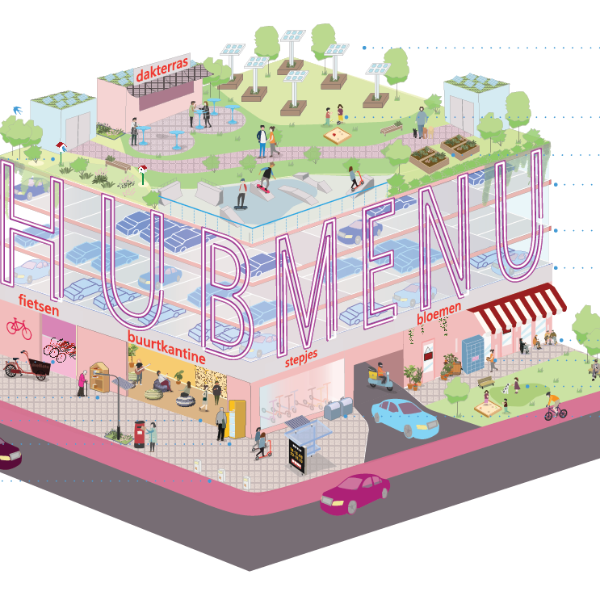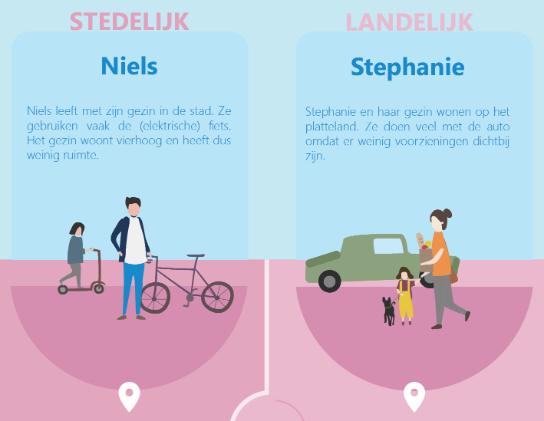HUB ME-NU!

HUB ME-NU!
Mobility hubs will play a key role in a future-proof mobility system as starting, ending or transfer points. Witteveen+Bos' HUB ME-NU! design philosophy enables the design of a sustainable mobility hub along the preferences of end users and stakeholders.
Design mobility hub
For every Dutch municipality, mobility hubs are both a hot topic and a complex and integral challenge. Analysis of existing mobility hubs often shows that these hubs are designed with 'mobility' as the leading (and often only) functionality. This is limiting the operation and chances of an appropriate operating model. To make the design process run smoothly, we have combined our experiences in this design philosophy.
HUB ME-NU! as a key to customised mobility hubs
HUB ME-NU! has been developed for national, provincial, and municipal policymakers and for public and/or private developers of a mobility hub. The tool helps to design a sustainable mobility hub in an accessible way. We design based on the preferences of end users and stakeholders.
HUB ME-NU! offers tools to find answers to questions such as: 'How do you design the most sustainable mobility hub? And how do you ensure that the hub has the greatest possible social value? How do you ensure that the mobility hub continues to function for the long term?'

Solution for mobility specialists
The concept is also interesting for experts and specialists active in the field of sustainable and new mobility. HUB ME-NU! can be used to start the discussion on mobility hubs and involve citizens and end users in developing a hub. The tool is also capable of designing and calculating variants.
The HUB ME-NU! will come to a customised design step by step
Step 1: The user chooses the desired functions for the mobility hub. Think: mobility, facilities, social, nature and climate, energy.
Step 2: The MobiHub tool collects all completed menu cards and analyses them. On this basis, the tool generates an ideal composition for the desired mobility hub. The toolbox also quantifies the costs and revenues, energy balance and environmental impact of the mobility hub.
Step 3: The output of the toolbox forms a conversation basis to bring together the interests of all interlocutors and arrive at dominant decision information.
After realisation:
Step 4: The mobility hub has been in operation for some time. When functioning well, expansion is simple because the system is easily scalable. Due to its modular design, less functioning elements can be easily swapped.
Step 5: The mobility hub will be (partially) demolished. Much of the material can be reused because the entire life cycle has been thought through beforehand. Moreover, the modular construction makes it possible to reuse a system in another mobility hub.

Why use the HUB ME-NU?

Customised features
The features in a mobility hub depend heavily on the local context. With HUB ME-NU! you realise a customised mobility hub at every location by letting end users choose the desired features.

User-central
By putting the user in the centre of design, we ensure that the features in the mobility hub are used. This prevents the mobility hub from consisting of unwanted or unused features.

Modular and scalable
Working with modular systems allows easy switching of features in the mobility hub. Thus, the mobility hub always matches changing end-user needs. The standard size of the mobility hub is one parking space. This facilitates easy growth from street hub to district hub to region hub.
Want to know more?
Simon is committed to sustainable mobility.



